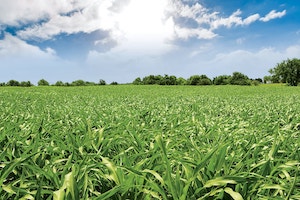As black cutworm becomes a more prominent pest across Iowa, experts at the Iowa State University Extension and Outreach are offering their advice for managing the issue. They note that it is essential to look at fields to determine whether black cutworm larvae are present and determine whether management is required.
Much of the corn planting across Iowa is complete, meaning now is a good time for producers to evaluate the situation. Black cutworm moths lay eggs in crop fields and once their larvae are in place, they can begin feeding on leaves or cut corn seedlings. Significant flights have already occurred in most of Iowa, with several counties – including Benton, Carroll, and O’Brien – reporting them.
Fields should be evaluated every seven to 10 days, according to the experts, until plants reach the V5 stage. Producers may want to start scouting several days before their estimated cutting dates. Early scouting is essential, as local larvae development varies due to weather conditions.
Black cutworm larvae have grainy, light grey-to-black skin and four pairs of prolegs at the end of the abdomen. There are also pairs of dark tubercles along the sides of the body, which distinguish them from similar cutworm species.
Preventative insecticide treatments are questionable for control. Instead, the experts say that rescue treatments are typically the most efficient and economical approach to managing black cutworm, as it is a sporadic pest. Producers should evaluate their crops to determine if the larvae still exist before utilizing insecticides.
For more information on black cutworm management, visit the Iowa State University Extension and Outreach website.
